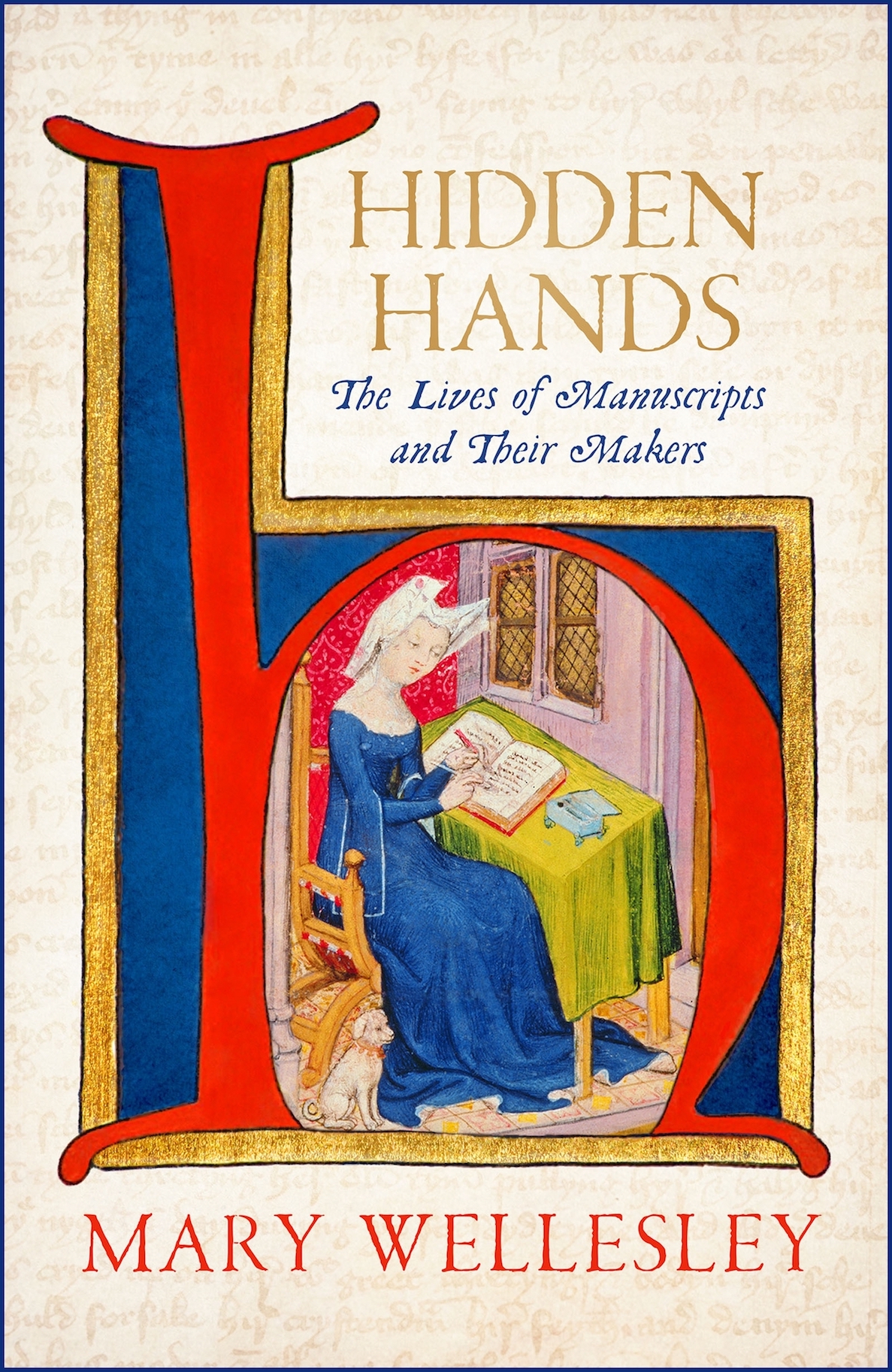Outside Wales – even, perhaps, within it – few students will have run across the verse of Gwerful Mechain. The free-spirited poet of the late 15th century may come as a thrilling surprise (one of several) to readers of Mary Wellesley’s Hidden Hands. Gwerful was trained, probably by a family member, in the fiendish virtuosity of Welsh strict-metre verse-forms but barred from the all-male ranks of professional bards. Yet she sparred fearlessly in deftly-marshalled words with the conventions of her time. One notorious ode, preserved in 13 manuscript copies, spurns the drippy praise of girls’ eyes, hair and so forth that male poets liked to spout.
Subtitled “the lives of manuscripts and their makers”, Hidden Hands not only shows how a variety of written works, both famous and forgotten, were created and transmitted in Britain over eight medieval centuries – between AD700 and 1500. Wellesley tracks the afterlives of her chosen texts. She demonstrates how accident, prejudice and power – “the whims of scribes, the biases of collectors and the vagaries of chance” – determined which works lived, and which died. In Gwerful Mechain’s case, the wealth of manuscript copies attests to her renown. Her verse went on circulating orally as well. Welsh Victorians, however, wanted to uphold Nonconformist piety and rebut English stereotypes about their wild ways. Gwerful’s defiant sensuality and frankness about women’s lives would hardly please the chapel elders. She dropped below the literary horizon, but – mercifully – never quite vanished. This book tells many such tales of “survival against the odds”.
Wellesley has worked in the British Library’s manuscript division and still teaches in its education programme. Hidden Hands, her debut, brims with a contagious enthusiasm about the ability of hand-crafted works from before the age of print to act as a “portal” into the world of their makers. A number of recent studies have brought seemingly dry medieval subjects to life with storytelling verve added to lightly-worn erudition. Hidden Hands neatly complements one in particular: Christopher de Hamel’s much-loved Meetings with Remarkable Manuscripts. Wellesley casts her net wider over medieval life and literature in a more informal, even digressive, but still thoroughly learned style. She places a special stress on the faint marks left by women authors, scribes and artists. This quest to encounter “the ghosts of those we have lost” situates her in a great tradition of female (indeed feminist) medievalists. It began with pioneers such as Helen Waddell, Eileen Power and even Dorothy L Sayers – who translated Dante as well as inventing the toff sleuth Lord Peter Wimsey.
If you find fixed canons and rigid orthodoxies off-putting, then medieval manuscripts might, paradoxically, suit you. So much remains fluid and open to debate: who commissioned, designed and wrote what; how individual works came into being; the relations of patron, author and scribe (or illuminator) – even the genre to which texts belong. Many volumes, as Hidden Hands explains, take the form of loose miscellanies. Pious tracts, poems, pictures, stray annotations, jokes and riddles, all jostle on the decorated page. Wellesley makes a fine advocate for the messy, multiform complexity of the hand-lettered manuscript – with its marginalia, over-writings and erasures – as opposed to “the sanitised, ordered blandness of the modern, printed text”. Besides, Hidden Hands never loses touch with the grainy materiality of medieval literary production. Wellesley gets her own hands dirty in Britain’s only surviving parchment works, which smells “like the inside of a boxing glove”. She delves into the chemical analysis of page and ink that can save the memory of unnamed scribe and artist from oblivion. Hence the teeth of an 11th-century German nun, with tiny crystals of lapis lazuli left from licking a paintbrush, indicate that women did work as manuscript illuminators, “and with the most precious materials in the trade”.
Manufacture of lavish manuscripts could take almost as long as building the abbeys and cathedrals that housed them. Hidden Hands details the long-haul, sub-contracted labour that saw a small army of specialists collaborate on the magnificent 12th-century Winchester Bible, whose format “allows us to lift the bonnet and see the workings of the artistic engine”. Wellesley also tries to recover the names and the stories of long-departed book-creators. We meet, for instance, the nun Leoba, taught to write verse by the Abbess of Thanet and “the first named English female poet”; or Hugeberc, a missionary sister from England who, around 780, left cleverly coded traces of her presence in a German work of hagiography; and Bishop Eadfrith, who – for once – can be securely identified as the chief artist-scribe who crafted the Lindisfarne Gospels half a century earlier.
 Eadfrith managed to dodge the anonymity that has buried most of the craftspeople, women and men, commemorated in Hidden Hands. With the “comedic and surreal” illuminators who filled the margins of the 14th-century Luttrell Psalter with medieval sitcom scenes, “strange events and outlandish beasts”, in addition to lovingly inked sketches of everyday Lincolnshire life, we can only name them as “Hand B”, the “Luttrell Master”, and so on. So it comes a jolt to learn that two of the principal hands responsible for the mighty Sherborne Missal (c.1400) have names firmly attached to them: John Siferwas, the artist, and John Whas, the scribe.
Eadfrith managed to dodge the anonymity that has buried most of the craftspeople, women and men, commemorated in Hidden Hands. With the “comedic and surreal” illuminators who filled the margins of the 14th-century Luttrell Psalter with medieval sitcom scenes, “strange events and outlandish beasts”, in addition to lovingly inked sketches of everyday Lincolnshire life, we can only name them as “Hand B”, the “Luttrell Master”, and so on. So it comes a jolt to learn that two of the principal hands responsible for the mighty Sherborne Missal (c.1400) have names firmly attached to them: John Siferwas, the artist, and John Whas, the scribe.
Wellesley tells some relatively familiar stories as well as rescuing others from oblivion. She considers the famous Paston Letters from 15th-century Norfolk, and shows how their male scribes could get dangerously close to the women of substance who dictated them. She evokes the anchorite’s life of the mystic Julian of Norwich – that visionary thinker from a time when “one of the few ways women could achieve autonomy and social standing… was by imprisoning themselves”. And she surveys the 92 early manuscripts of Chaucer’s Canterbury Tales, which taken together look “as diverse, messy, surprising and delightful” as the pilgrims’ yarns themselves.
Gorgeously illustrated with plates from its star works, Hidden Hands covers much ground within a modest span. Its transitions – like a brief coda on the arrival of the printed book – can feel abrupt. Compared to De Hamel’s tight focus and chronological march, it shares something of the quick-change, vagabond feel of the manuscripts it presents, with their rapid switches of form and tone. Once or twice, crisper editing would have sharpened it: so Shakespeare’s autograph manuscript of pages of the play The Book of Sir Thomas More is introduced on p.267, and again on p.272. But none of that detracts from the infectious pleasure in discovery that animates each page with bustling life and unexpected depth of feeling. As “the centuries dissolve”, the women and men who made these artefacts step from the shadows. To reach Gwerful Mechain, Wellesley writes, “we have to search in the spaces between the lines”. Delightfully, Hidden Hands does exactly that.
- Hidden Hands: the Lives of Manuscripts and their Makers by Mary Wellesley (riverrun, £25)
- More book reviews and features on theartsdesk















Add comment